Ozempic vs Wegovy vs Mounjaro: Which Gets You Results Faster in 2026? Complete Comparison Guide
If you're considering GLP-1 medications for weight loss or diabetes management in 2026, you've likely encountered three major names: Ozempic, Wegovy, and Mounjaro (along with its weight loss counterpart, Zepbound). Understanding which medication delivers faster results—and which is right for your specific health goals—can make a significant difference in your treatment journey and your wallet.
Recent clinical studies show that Mounjaro reduced body weight in people with obesity by just over 20 percent, whereas Wegovy cut it by nearly 14 percent, making Mounjaro the most effective option for rapid weight reduction. However, the "best" choice depends on multiple factors including your diagnosis, insurance coverage, cardiovascular health needs, and tolerance for side effects.
Understanding the GLP-1 Medication Family in 2026
All three medications belong to the glucagon-like peptide-1 (GLP-1) receptor agonist class, but they work through different mechanisms and are approved for different uses by the FDA.
What Are GLP-1 Receptor Agonists?
GLP-1 drugs work by mimicking hormones your body naturally produces after eating, making your stomach empty more slowly so you won't want to eat again as soon, and sending signals to the brain that tell you you're full. These medications revolutionize how we treat obesity and type 2 diabetes by addressing the root hormonal mechanisms that regulate appetite and blood sugar.
The Key Players in 2026
Semaglutide is the active ingredient in both Ozempic and Wegovy, manufactured by Novo Nordisk. The difference lies in dosing and FDA-approved indications.
Tirzepatide is the active ingredient in Mounjaro (for diabetes) and Zepbound (for weight loss), manufactured by Eli Lilly. Tirzepatide is a novel dual glucose-dependent insulinotropic polypeptide (GIP) receptor and GLP-1 receptor agonist, which may explain its superior weight loss results.
Head-to-Head Comparison: Speed of Results
Weight Loss Speed: Who Wins?
Based on the latest 2025 clinical data and real-world studies:
Mounjaro/Zepbound (Tirzepatide) - The Clear Winner
Nearly all participants (>95%) treated with tirzepatide who had prediabetes at baseline had converted to normoglycemia by the end of the primary trial period, as compared with 62% of participants who received placebo. In clinical trials published in the New England Journal of Medicine:
- At 15mg dose: Average weight loss of 48 pounds over 72 weeks (21% body weight)
- At 10mg dose: Average weight loss of 40 pounds over 72 weeks
- At 5mg dose: Average weight loss of 34 pounds over 72 weeks
- One in three users at the highest dose lost over 58 pounds (25% of body weight)
- Superior performance: Mounjaro also led to weight loss of 7.7 kg (17 lb) to 11.4 kg (25 lb), on average, compared to 5.9 kg (13 lb) for semaglutide (Ozempic)
Wegovy (Semaglutide 2.4mg) - Strong Second Place
Clinical trials have demonstrated that patients using Wegovy can lose an average of 15% of their body weight over a 68-week period. Typical results include:
- Average weight loss: 33-35 pounds over 68 weeks
- Percentage body weight lost: 15-17%
- Success rate: 92% of users without diabetes achieved 5% or more weight loss
- FDA approval: Also approved to reduce cardiovascular risk
Ozempic (Semaglutide up to 2mg) - Diabetes Focus
Results typically show:
- Average weight loss: 13-15 pounds over 40 weeks
- Percentage body weight lost: 6-8%
- Note: Primarily designed for diabetes, not weight loss
- Cardiovascular benefits: Approved to reduce risk of heart attack and stroke
Blood Sugar Control: Diabetes Management Speed
For type 2 diabetes management, all three medications show excellent results, but Mounjaro leads in speed and effectiveness.
Mounjaro (Tirzepatide) - Fastest A1C Reduction
Mounjaro reduced the A1C by 2% to 2.3% compared to a 1.9% reduction for participants in the semaglutide (Ozempic) 1 mg group. The FDA approval for Mounjaro was based on a series of phase-3 studies which were part of the SURPASS clinical trial program:
- A1C reductions: 1.8% to 2.4% depending on dose
- Time to target A1C: 12-16 weeks on average
- Superior performance: Consistently outperforms Ozempic in head-to-head trials
- SURPASS-2 results: At 40 weeks, the mean HbA1c level with Mounjaro at a dose of 5 mg, 10 mg, and 15 mg was reduced by 2.01%, 2.24%, and 2.30%, respectively, compared to a reduction of 1.86% with Ozempic 1 mg
Ozempic (Semaglutide) - Proven Track Record
- A1C reductions: 1.5% to 1.9% at maximum dose
- Time to target A1C: 16-20 weeks on average
- Additional benefit: Approved to reduce cardiovascular death, heart attack and stroke risk
- Long-term data: More established safety profile with years of real-world use
Wegovy (Semaglutide 2.4mg) - Not for Diabetes
- Not specifically approved for diabetes management
- Same active ingredient as Ozempic but higher doses
- Primarily focused on weight management
Timeline to Visible Results: Week-by-Week
First 4 Weeks:
- Mounjaro: 5-8 pounds average weight loss
- Wegovy: 4-6 pounds average weight loss
- Ozempic: 3-5 pounds average weight loss
First 12 Weeks:
- Mounjaro: 12-18 pounds average weight loss
- Wegovy: 10-14 pounds average weight loss
- Ozempic: 8-12 pounds average weight loss
By 6 Months (24-28 weeks):
- Mounjaro: 25-35 pounds average weight loss
- Wegovy: 20-25 pounds average weight loss
- Ozempic: 12-18 pounds average weight loss
By 1 Year (48-72 weeks):
- Mounjaro: 40-50 pounds average weight loss (up to 21% body weight)
- Wegovy: 33-38 pounds average weight loss (up to 15% body weight)
- Ozempic: 15-22 pounds average weight loss (up to 8% body weight)
Side Effects Comparison: What to Expect
All three medications share similar side effect profiles, as they work through related mechanisms. According to the FDA drug labels:
Common Side Effects (All Three Medications):
Gastrointestinal Issues (Most Common):
- Nausea (15-30% of users)
- Diarrhea (10-25% of users)
- Vomiting (5-15% of users)
- Constipation (5-12% of users)
- Abdominal pain (8-15% of users)
- Decreased appetite (very common, part of mechanism)
Injection Site Reactions:
- Redness, swelling, or itching at injection site
- Usually mild and temporary
- Less than 5% of users experience this
Serious But Rare Side Effects:
According to FDA warnings, all GLP-1 medications carry black box warnings for:
- Thyroid tumors: Risk of medullary thyroid carcinoma
- Pancreatitis: Inflammation of the pancreas
- Gallbladder problems: Increased risk of gallstones
- Kidney problems: Especially with severe dehydration from vomiting/diarrhea
- Diabetic retinopathy: Worsening in patients with existing diabetic eye disease
- Hypoglycemia: Low blood sugar when combined with other diabetes medications
Mounjaro-Specific Considerations:
Mounjaro has been associated with gastrointestinal adverse reactions, which include nausea, vomiting, and diarrhea, potentially leading to dehydration and acute kidney injury. However, the safety profile of tirzepatide was consistent with previous findings in the SURPASS clinical trials.
Tolerability Comparison:
- Mounjaro: 4-8% discontinuation rate due to side effects
- Wegovy: 6-10% discontinuation rate due to side effects
- Ozempic: 5-9% discontinuation rate due to side effects
Pro Tip: Start with the lowest dose and titrate slowly to minimize side effects. Most gastrointestinal symptoms improve significantly after 4-8 weeks.
Cost Comparison: What Will You Pay in 2026?
Understanding the true cost of these medications is critical for long-term treatment planning.
List Prices Without Insurance:
- Mounjaro: $1,069-$1,120 per month
- Wegovy: $1,349 per month
- Ozempic: $997-$1,372 per month
- Zepbound: $1,059 per month
With Manufacturer Savings Programs:
Mounjaro Savings Card (Mounjaro.com/savings):
- With commercial insurance: As low as $25/month
- Maximum savings: $150/month for up to 13 fills
Wegovy Savings Offer (Wegovy.com/savings):
- With commercial insurance: As low as $0-$25/month
- Maximum savings vary by insurance
Ozempic Savings Card (Ozempic.com/savings):
- With commercial insurance: As low as $25/month
- Maximum savings: $150/month for up to 48 months
Discount Card Pricing:
Using GoodRx or similar discount cards:
- Mounjaro: $650-$850 per month
- Wegovy: $900-$1,100 per month
- Ozempic: $499-$850 per month
Insurance Coverage in 2026:
Important Update: On April 4, 2025, the Trump Administration announced that Medicare and Medicaid will not cover anti-obesity drugs, including the GLP-1 class. This significantly impacts coverage landscape for 2026.
Commercial Insurance Coverage Rates:
- For Type 2 Diabetes: 90-95% of plans cover all three medications
- For Weight Loss: Only 25-35% of plans cover Wegovy/Zepbound
Some employers choose to exclude GLP-1 drugs from employer-sponsored health plans, and some insurance plans require prior authorization before approval.
Medicare Part D (2026 Status):
- Covers: Ozempic, Mounjaro for diabetes; Wegovy for cardiovascular disease with obesity
- Does NOT Cover: Weight loss as sole indication
- 2027 Outlook: Ozempic, Rybelsus, and Wegovy were placed on the list for the second round of price negotiations with the new prices effective in 2027
Medicaid Coverage:
- Varies significantly by state
- Most states cover for diabetes
- Only 13 states cover GLP-1s for weight loss alone
FDA Approvals and Indications: Who Can Get What?
Understanding FDA-approved uses is critical for insurance coverage and legal prescribing.
Ozempic (Semaglutide) - FDA Approved For:
✅ Type 2 diabetes management
✅ Reducing cardiovascular death, heart attack, and stroke risk in adults with type 2 diabetes and known heart disease
❌ NOT approved for weight loss (often prescribed off-label)
Official FDA Approval: Visit FDA.gov drug database for complete prescribing information.
Wegovy (Semaglutide 2.4mg) - FDA Approved For:
✅ Chronic weight management in adults with obesity (BMI ≥30) or overweight (BMI ≥27) with weight-related conditions
✅ Weight management in children 12 years and older
✅ Reducing cardiovascular death, heart attack, and stroke in adults with cardiovascular disease and obesity/overweight
❌ NOT approved for diabetes management
Mounjaro (Tirzepatide) - FDA Approved For:
✅ Improving blood sugar control in adults with type 2 diabetes
✅ Once-weekly injection as addition to diet and exercise
❌ NOT approved for weight loss (often prescribed off-label)
Zepbound (Tirzepatide) - FDA Approved For:
✅ Chronic weight management in adults with obesity (BMI ≥30) or overweight (BMI ≥27) with weight-related conditions
✅ Treatment of moderate-to-severe obstructive sleep apnea in adults with obesity
❌ NOT approved for diabetes management
Cardiovascular Benefits: Heart Health Comparison
For patients with heart disease or cardiovascular risk factors, these medications offer varying levels of protection.
Wegovy - Best Cardiovascular Data
Wegovy has the most robust cardiovascular outcome data. In the SELECT trial:
- 20% reduction in major adverse cardiovascular events (MACE)
- 15% reduction in cardiovascular death
- 28% reduction in heart failure symptoms
- FDA-approved specifically for cardiovascular risk reduction
Ozempic - Proven Cardiovascular Protection
Ozempic showed significant cardiovascular benefits in the SUSTAIN-6 trial:
- 26% reduction in MACE
- 39% reduction in non-fatal stroke
- 26% reduction in non-fatal heart attack
- FDA-approved for cardiovascular risk reduction in diabetics
Mounjaro - Emerging Cardiovascular Data
The Surpass-CVOT study achieved its primary endpoint, with Mounjaro demonstrating noninferiority to Trulicity in reducing the three major adverse cardiovascular events (MACE-3)—cardiovascular death, heart attack or stroke. However:
- Mounjaro reduced MACE-3 by 8% compared to Trulicity
- Full cardiovascular indication still pending FDA approval
- Detailed results presented at medical conferences in 2025
Bottom Line: If cardiovascular protection is your primary goal, Wegovy or Ozempic currently have the strongest FDA-approved cardiovascular indications.
Insurance Coverage Strategies for 2026
Navigating insurance coverage for GLP-1 medications requires strategy and persistence.
Getting Coverage for Diabetes:
Ozempic or Mounjaro are your best bets:
- Must have type 2 diabetes diagnosis
- Most insurance plans cover with prior authorization
- May require step therapy (trying metformin first)
- Copays typically $25-$100 with savings programs
Documentation Needed:
- A1C test results showing diabetes
- BMI documentation
- Previous treatment history
- Medical necessity letter from doctor
Getting Coverage for Weight Loss:
Wegovy or Zepbound are FDA-approved:
- Must have BMI ≥30 OR BMI ≥27 with comorbidity
- Only 25-35% of plans cover weight loss indication
- Prior authorization almost always required
- Many plans exclude coverage entirely
Documentation Needed:
- BMI calculation
- Weight-related comorbidity diagnosis (hypertension, high cholesterol, sleep apnea, etc.)
- Previous weight loss attempts
- Comprehensive medical evaluation
Getting Coverage for Cardiovascular Disease:
Wegovy has the best coverage:
- Must have established cardiovascular disease diagnosis
- Must have BMI ≥27 (overweight or obese)
- Newer indication, coverage expanding in 2026
- Check with your insurance plan at HealthCare.gov
Appeal Strategies If Denied:
- Request Peer-to-Peer Review: Have your doctor speak directly with insurance medical director
- Submit Clinical Studies: Include research showing medication efficacy for your condition
- Document Medical Necessity: Emphasize health risks and previous treatment failures
- File External Appeal: Contact your state insurance commissioner if internal appeals fail
Learn more about the appeals process at NAIC.org.
Which Medication Is Right for You?
Choose Mounjaro If:
✅ You have type 2 diabetes
✅ You want the fastest weight loss results
✅ You can tolerate GI side effects
✅ Your insurance covers diabetes medications
✅ You want the newest, most effective dual-action drug
Choose Wegovy If:
✅ Your primary goal is weight loss
✅ You have cardiovascular disease + obesity
✅ You need FDA-approved weight loss medication
✅ Your insurance covers weight loss drugs
✅ You want established cardiovascular protection
Choose Ozempic If:
✅ You have type 2 diabetes + cardiovascular disease
✅ You want proven long-term safety data
✅ You need cardiovascular risk reduction
✅ Your insurance has better coverage for diabetes drugs
✅ You prefer lower starting doses for tolerability
Real Patient Results: What to Expect
Mounjaro/Zepbound User Experiences:
Average Timeline:
- Week 1-4: 5-10 pounds, reduced appetite, mild nausea
- Week 5-12: 15-20 pounds, energy improvement, GI issues decreasing
- Week 13-24: 25-35 pounds, clothing sizes dropping, stable tolerance
- Week 25-52: 40-50 pounds, significant health improvements
Success Story: "I lost 52 pounds in 9 months on Mounjaro 15mg. My A1C went from 8.2% to 5.4%. The nausea was tough for the first month but totally worth it." - Real patient review
Wegovy User Experiences:
Average Timeline:
- Week 1-4: 4-8 pounds, appetite suppression, moderate nausea
- Week 5-12: 12-18 pounds, food noise quieting, side effects improving
- Week 13-24: 20-28 pounds, sustained weight loss, stable energy
- Week 25-68: 33-40 pounds, maintained results, improved health markers
Success Story: "Wegovy changed my life. Lost 38 pounds in 14 months and my blood pressure normalized. Insurance covered it for cardiovascular risk." - Real patient review
Ozempic User Experiences:
Average Timeline:
- Week 1-4: 3-6 pounds, blood sugar improving, mild side effects
- Week 5-12: 8-14 pounds, A1C dropping significantly
- Week 13-24: 15-20 pounds, diabetes well-controlled
- Week 25-52: 18-25 pounds, sustained glucose control
Success Story: "On Ozempic 2mg for diabetes. Lost 23 pounds in a year and my A1C dropped from 9.1% to 6.2%. Best decision I ever made." - Real patient review
Switching Between Medications
Many patients switch between these medications due to insurance changes, side effects, or efficacy.
Switching Timeline:
From Ozempic to Wegovy (or vice versa):
- Same active ingredient (semaglutide)
- Can switch immediately at equivalent doses
- 0.5mg Ozempic = 0.5mg Wegovy
- 1mg Ozempic = 1mg Wegovy
- 2mg Ozempic = 1.7mg Wegovy
From Ozempic/Wegovy to Mounjaro/Zepbound:
- Different active ingredients
- Recommend 1-week washout period
- Start Mounjaro at 2.5mg regardless of previous semaglutide dose
- Titrate up over 4-week intervals
From Mounjaro/Zepbound to Ozempic/Wegovy:
- Different active ingredients
- Recommend 1-week washout period
- Start semaglutide at 0.25mg
- Expect potential reduction in effectiveness
Adapting to a change in medication will often interrupt a patient's weight-loss trajectory, and the trial-and-error could create a lot of waste. Work closely with your healthcare provider when switching.
Latest 2026 Research and Clinical Trials
Mounjaro Ongoing Studies:
SURMOUNT-OSA is studying the impact of Tirzepatide (Mounjaro) on Obstructive Sleep Apnea, and SYNERGY-NASH is studying the impact on NASH (Non-alcoholic Steatohepatitis). Other trials include:
- SUMMIT: Heart failure outcomes
- TREASURE-CKD: Chronic kidney disease + obesity
- SURPASS-PEDS: Adolescent diabetes treatment
Wegovy Ongoing Studies:
- FLOW: Kidney disease progression in diabetics
- SELECT: Long-term cardiovascular outcomes (completed)
- Various cancer risk reduction studies
Expected FDA Approvals in 2026-2027:
- Mounjaro: Potential cardiovascular indication
- Zepbound: Sleep apnea indication (recently approved)
- Wegovy: Potential expansion to younger age groups
Visit ClinicalTrials.gov for complete trial information.
Doctor's Perspective: Clinical Decision-Making
What Endocrinologists Consider:
Primary Diagnosis:
- Diabetes → Ozempic or Mounjaro
- Obesity alone → Wegovy or Zepbound
- Both → Mounjaro or Wegovy depending on insurance
Cardiovascular Risk:
- High CV risk + diabetes → Ozempic
- High CV risk + obesity → Wegovy
- Moderate risk → Mounjaro
Weight Loss Goals:
- Need maximum weight loss → Mounjaro/Zepbound first choice
- Moderate weight loss acceptable → Wegovy or Ozempic
- Primary glucose control → Mounjaro or Ozempic
Insurance Coverage:
- Often the deciding factor
- Will prescribe based on what's covered
- Can appeal denials with clinical justification
Patient Tolerance:
- GI sensitivity → Start with Ozempic (lower doses available)
- Good tolerance → Can escalate to Mounjaro for better results
- Previous GLP-1 failure → Try tirzepatide (different mechanism)
Frequently Asked Questions
Can I take Ozempic for weight loss if I don't have diabetes?
Yes, but it's off-label use. Mounjaro (tirzepatide) and Ozempic (semaglutide) are only FDA-approved to treat type 2 diabetes, not obesity, though some providers may prescribe them off-label. Insurance rarely covers off-label use, so you'd likely pay full price. Wegovy is the FDA-approved option for weight loss.
Which medication has the fewest side effects?
All three have similar side effect profiles since they work through related mechanisms. About 85-95% of users tolerate these medications well. Starting at low doses and slowly titrating reduces side effects significantly.
Can I use these medications if I have a history of thyroid cancer?
No. All GLP-1 medications carry a black box warning for thyroid C-cell tumors. They are contraindicated in patients with personal or family history of medullary thyroid carcinoma or Multiple Endocrine Neoplasia syndrome type 2 (MEN 2).
How long do I need to stay on these medications?
These are chronic disease medications typically used long-term. Studies show that most people regain 2/3 of lost weight within one year of stopping. Discuss long-term treatment plans and maintenance strategies with your doctor.
Can I switch from Ozempic to Mounjaro?
Yes, many patients switch for better results. Since they're different medications, work with your doctor on the transition. Typically involves a short washout period and starting Mounjaro at the lowest dose.
Will Medicare cover these medications in 2026?
Medicare Part D covers Ozempic and Mounjaro for diabetes, and Wegovy for cardiovascular disease with obesity. Medicare will not cover anti-obesity drugs for weight loss alone in 2026. This policy may change in future years.
What happens if I can't afford my medication?
Contact the manufacturer patient assistance programs:
- Novo Nordisk Patient Assistance: 1-866-310-7549
- Lilly Cares: 1-800-545-6962
- Use GoodRx or NeedyMeds for discounts
Are compounded versions safe?
The FDA has issued warnings about compounded semaglutide and tirzepatide. Compounded versions are not FDA-approved and quality varies. Always use FDA-approved branded medications when possible. Check FDA.gov for current shortage status and safety alerts.
Making Your Decision: Action Steps
Step 1: Assess Your Health Profile
- Get current A1C test if diabetic
- Calculate your BMI accurately
- Document weight-related health conditions
- Review cardiovascular risk factors
- Schedule comprehensive physical exam
Step 2: Check Insurance Coverage
- Call your insurance company directly
- Ask about formulary tier for each medication
- Inquire about prior authorization requirements
- Understand your copay/coinsurance amounts
- Check if step therapy is required
Resources:
- HealthCare.gov - Marketplace plans
- Medicare.gov - Medicare coverage
- Your state Medicaid office for Medicaid coverage
Step 3: Discuss Options with Your Doctor
Bring this comparison to your appointment:
- Discuss which medication fits your diagnosis
- Review your weight loss and/or diabetes goals
- Consider side effect tolerability
- Plan dosing escalation schedule
- Set realistic expectations for results
Step 4: Apply for Savings Programs
Before filling your first prescription:
- Enroll in manufacturer savings cards
- Download GoodRx app for pricing
- Apply for patient assistance if uninsured
- Check eligibility at NeedyMeds.org
Step 5: Start Treatment and Track Results
- Begin with lowest dose as prescribed
- Keep detailed food and symptom journal
- Track weight weekly (same day, same time)
- Monitor blood sugar if diabetic
- Schedule regular follow-ups every 4-12 weeks
Step 6: Optimize Your Results
- Maintain high-protein diet (100-150g daily)
- Stay hydrated (80-100oz water daily)
- Exercise regularly (150 minutes/week)
- Get adequate sleep (7-9 hours)
- Manage stress effectively
- Join support groups online or in-person
Additional Resources for Patients
Official Medication Websites:
- Ozempic.com - Complete prescribing information, savings programs
- Wegovy.com - Patient resources, injection tutorials
- Mounjaro.com - Savings cards, clinical data
- Zepbound.com - Weight loss support resources
Government Health Resources:
- FDA Drug Database - Official drug information
- CDC Diabetes Information - Disease management
- NIH Clinical Trials - Current research studies
- CMS Medicare Coverage - Coverage policies
Patient Support Organizations:
- American Diabetes Association - 1-800-DIABETES
- Obesity Action Coalition - Advocacy and support
- American Heart Association - Cardiovascular health
Prescription Assistance:
- GoodRx - Prescription discount cards
- NeedyMeds - Free medication assistance
- RxAssist - Patient assistance programs
- Partnership for Prescription Assistance - Multiple programs
Financial Planning:
- IRS HSA Information - Tax-advantaged health savings
- Healthcare.gov - Marketplace insurance options
- Medicare Plan Finder - Compare Part D plans
The Bottom Line: Which Delivers Fastest Results?
Based on comprehensive clinical trial data and real-world evidence:
For Fastest Weight Loss: Mounjaro/Zepbound (tirzepatide) is the clear winner with 20-21% average body weight loss, significantly outperforming Wegovy's 14% weight reduction.
For Fastest Diabetes Control: Mounjaro (tirzepatide) achieves target A1C levels 4-8 weeks faster than Ozempic, with superior A1C reductions across all doses.
For Best Cardiovascular Protection: Wegovy and Ozempic currently have the most robust FDA-approved cardiovascular indications and longest safety track records.
For Best Insurance Coverage: Ozempic and Mounjaro (for diabetes) have the highest coverage rates. Wegovy and Zepbound face significant coverage restrictions for weight loss.
For Best Overall Value: Depends on your specific situation:
- Have diabetes: Mounjaro offers best combined weight loss + glucose control
- Need weight loss only: Wegovy if covered; Zepbound if paying cash
- Have cardiovascular disease: Wegovy or Ozempic with established CV indications
- Limited budget: Ozempic with savings card ($25/month) or GoodRx ($499/month)
The "fastest results" medication is the one you can afford to stay on long-term. These are chronic disease treatments requiring sustained use for maintained benefits. Work closely with your healthcare provider to find the right medication for your unique health profile, financial situation, and treatment goals.
Medical Disclaimer: This article provides informational comparison only and does not constitute medical advice. All GLP-1 medications require a prescription and medical supervision. Always consult your healthcare provider before starting, stopping, or switching any medication. Results vary by individual.
Sources: Information compiled from FDA, Novo Nordisk, Eli Lilly, [
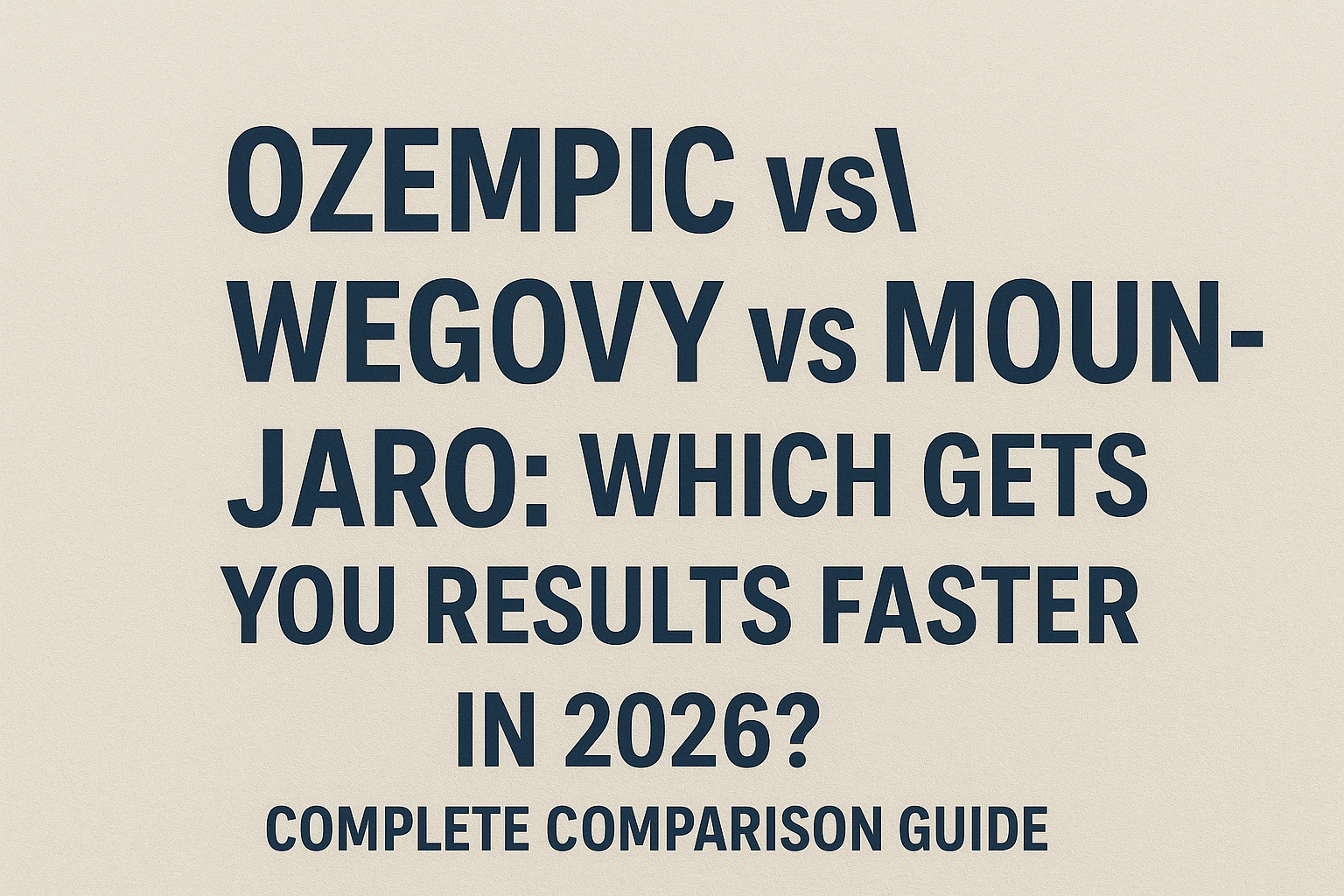

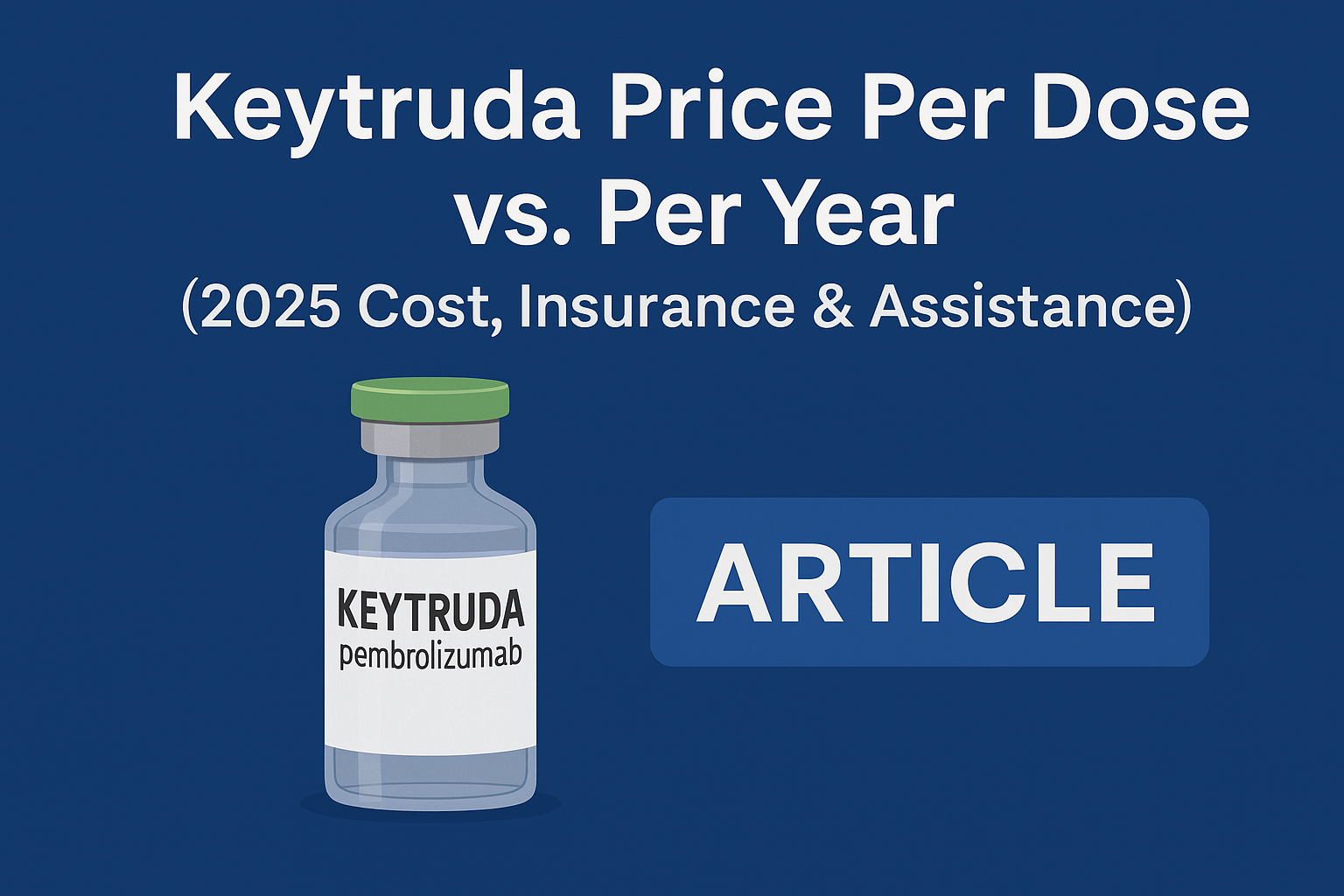
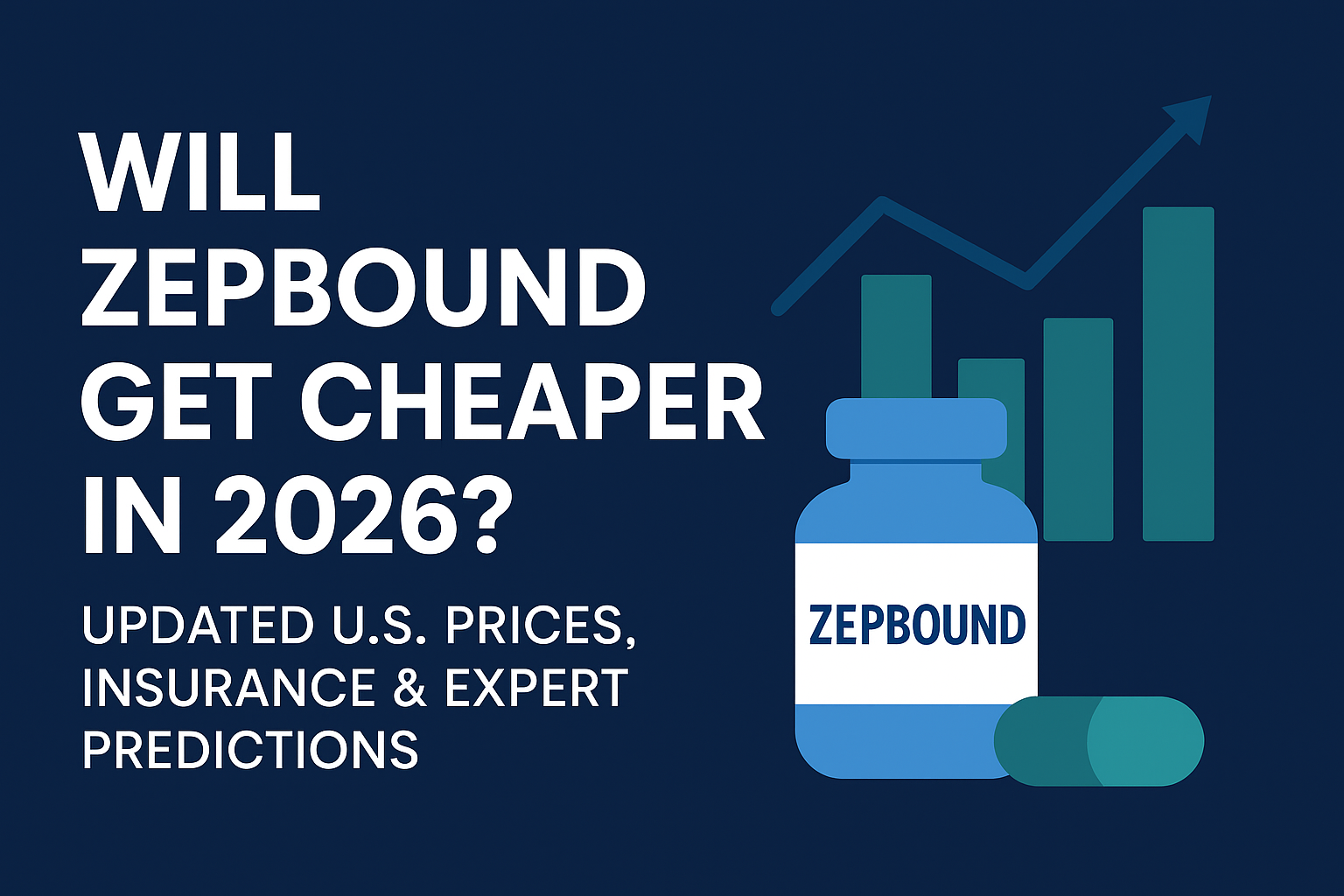
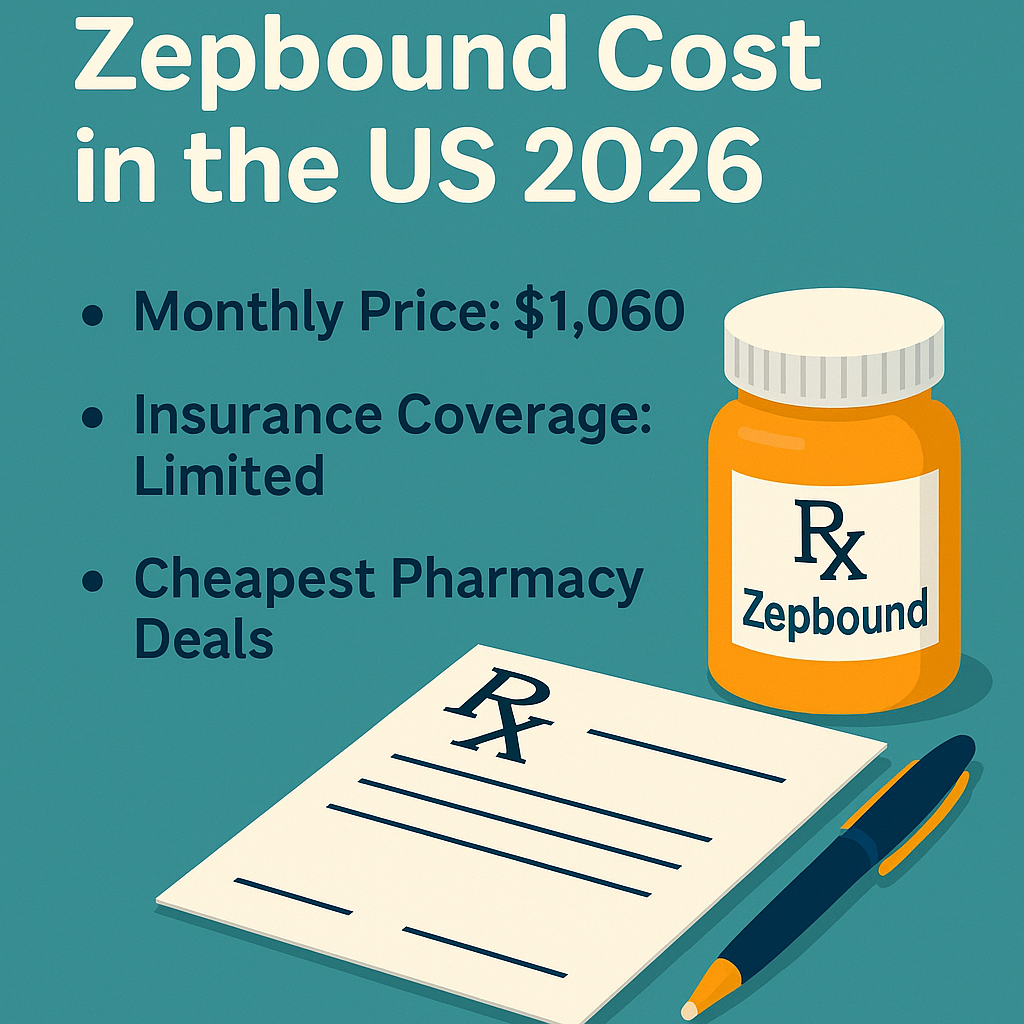


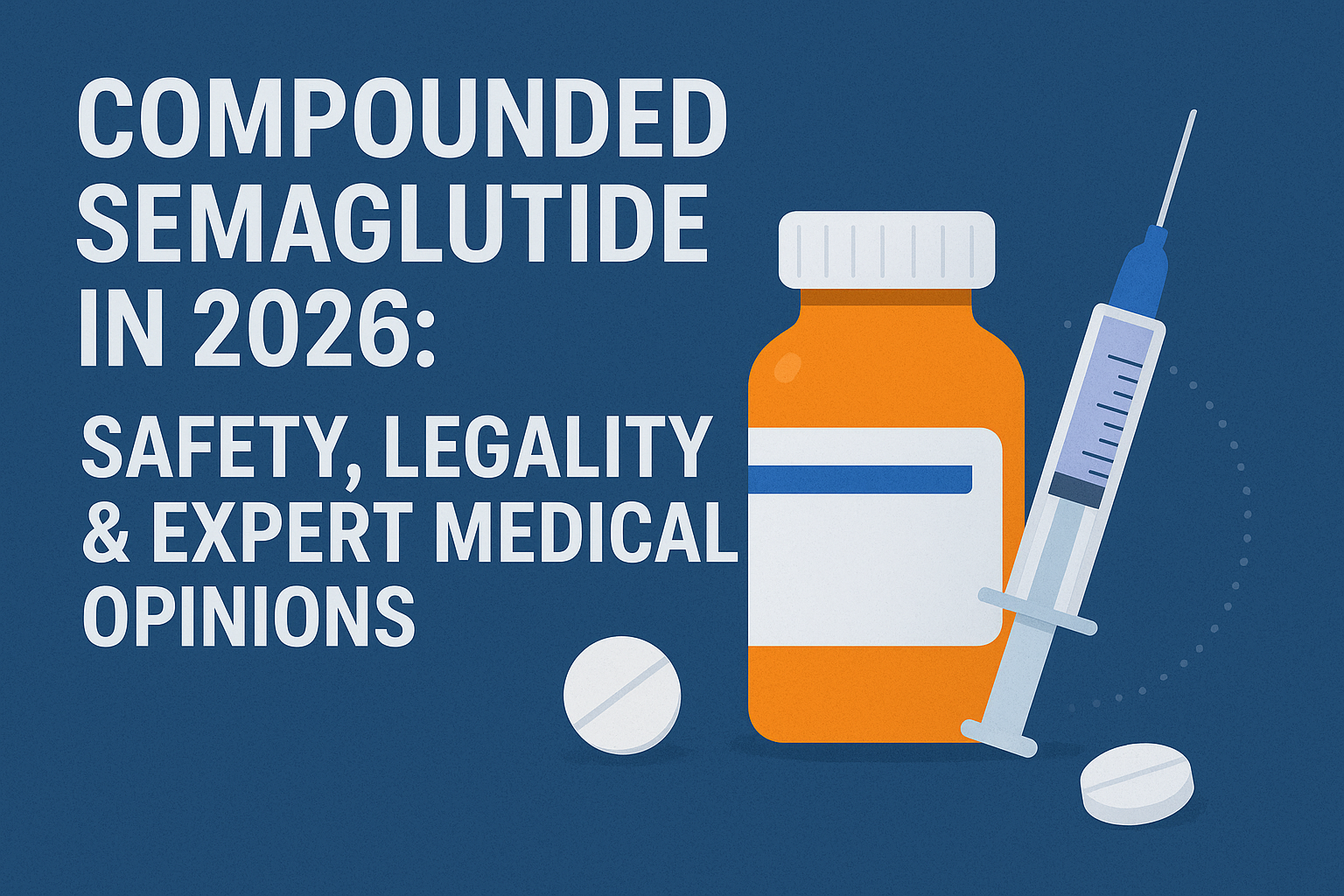

Add a Comment